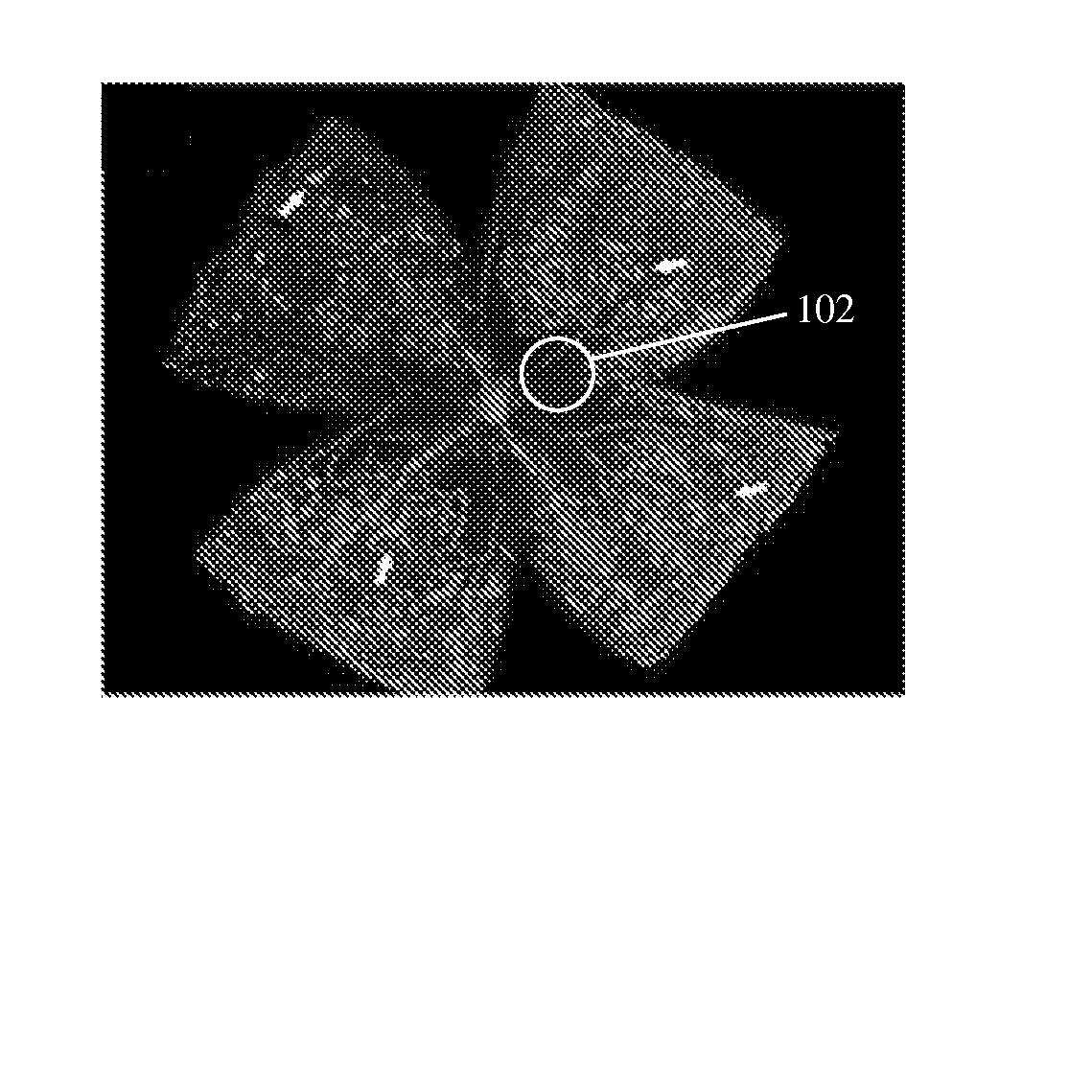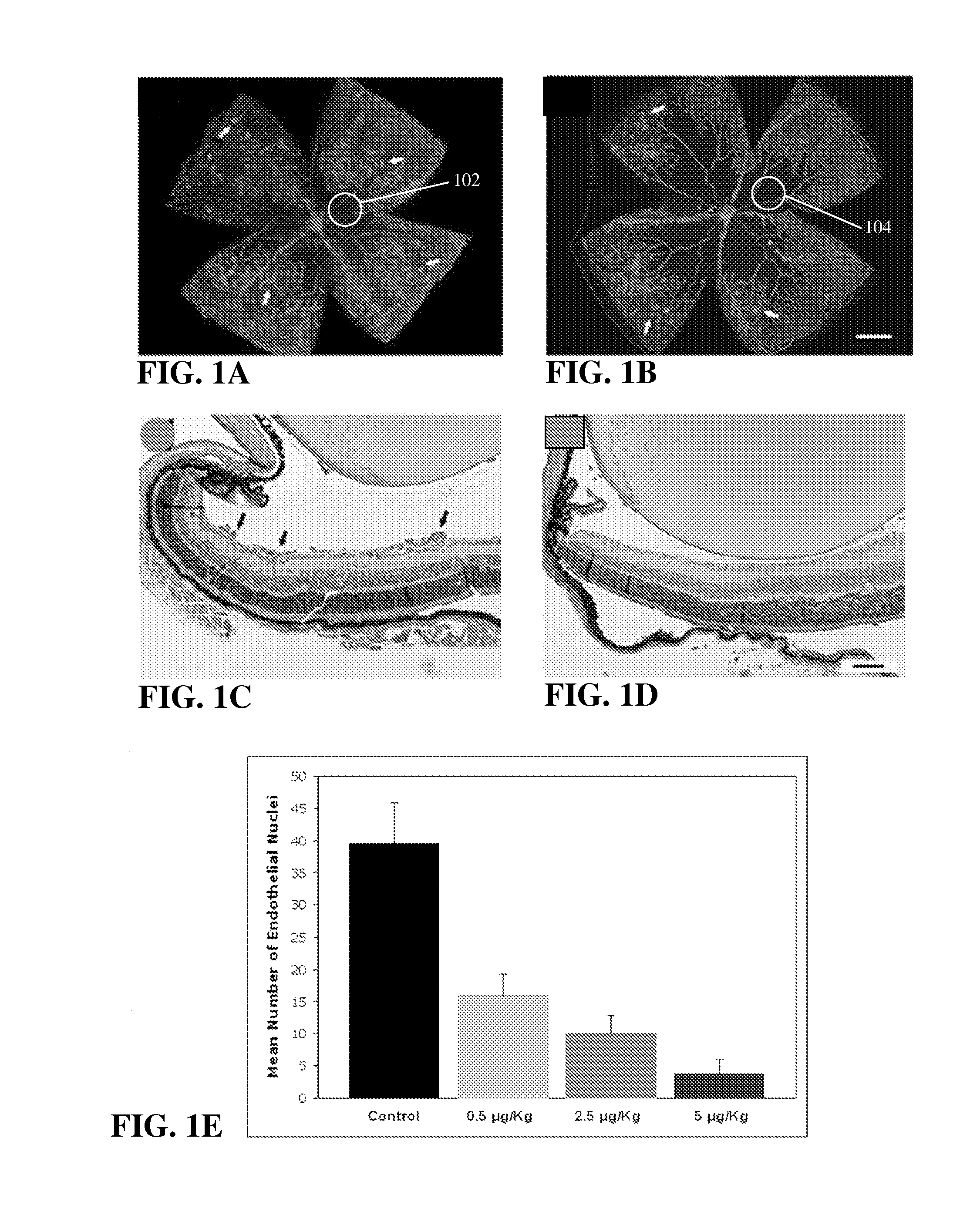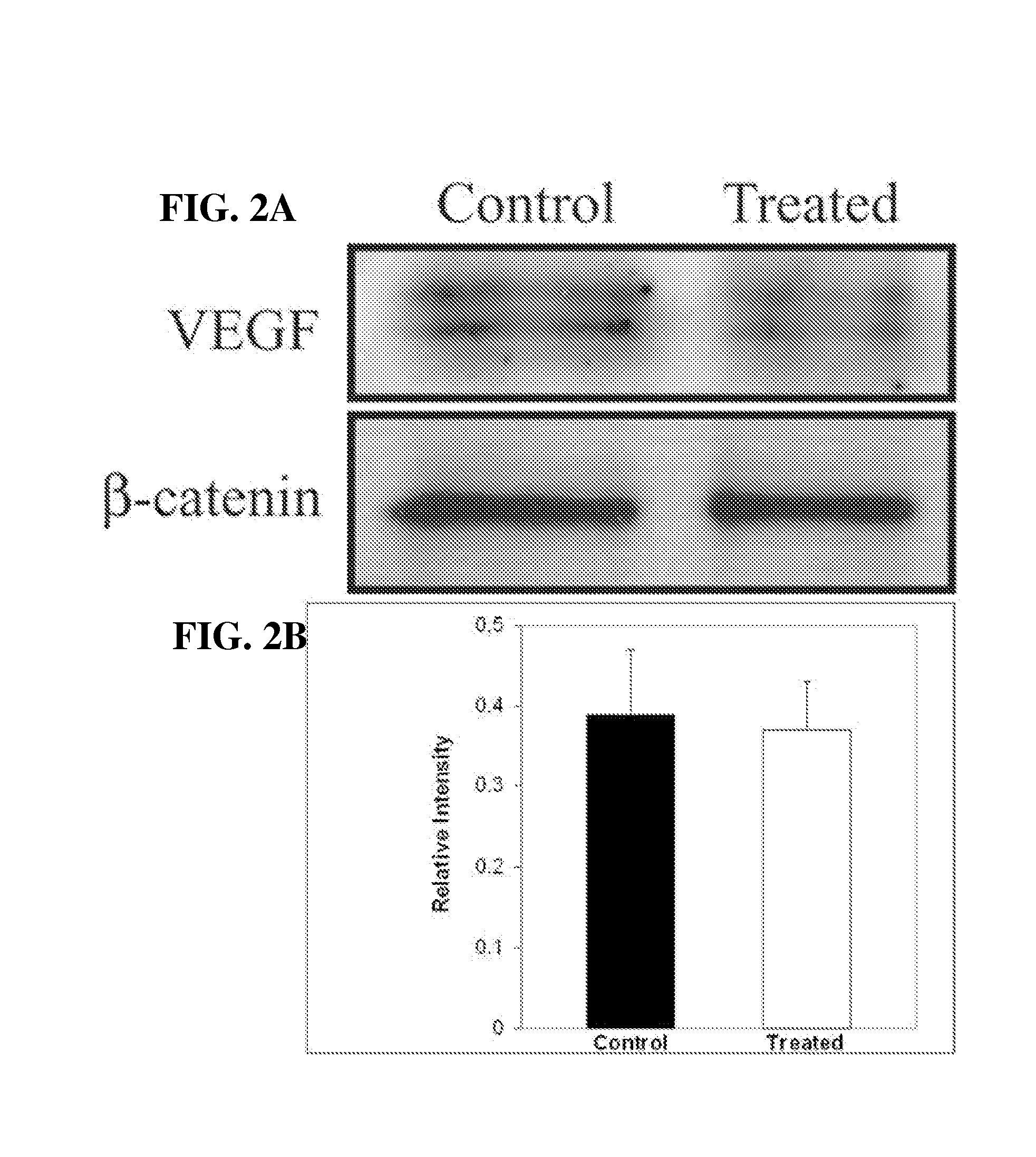Methods and compositions for treating diseases associated with neovascualrization
a technology of neovascularization and composition, which is applied in the field of compositions for treating eye diseases with neovascularization components, can solve the problems of no cure, no new blood vessels, and significant loss of vision, and achieve the effect of inhibiting angiogenesis and/or neovascular growth
- Summary
- Abstract
- Description
- Claims
- Application Information
AI Technical Summary
Benefits of technology
Problems solved by technology
Method used
Image
Examples
example 1
Effects of Calcitriol on Retinal Neovascularization
[0076] As described previously, the inventors, in performing experiments on the effects of various vitamin D analogs in treating retinoblastoma, included calcitriol as a control. Collagen IV immunohistochemical staining of the wholemount retinas was performed to visualize ischemia-induced retinal neovascularization. In this experiment, P7 mice were exposed to a cycle of hyperoxia and normoxia, and eyes were removed for appropriate analysis as described above. FIGS. 1A and 1B show retinal wholemounts in which the retinal vasculature was visualized by immunohistochemical staining using an anti-collagen IV antibody from P17 control and calcitriol-treated mice exposed to OIR, respectively. FIGS. 1C and 1D show hematoxylin-and periodic acid-Schiff (PAS)-stained cross sections prepared from P17 control and calcitriol-treated mice (0.5 μg / Kg, 2.5 μg / Kg and 5 μg / Kg) exposed to OIR, respectively. Arrows show the new vessels growing into the ...
example 2
Inhibition of Retinal Neovascularization by Calcitriol
[0078] Retinas from P17 control mice subjected to OIR contained multiple neovascular tufts on their surface (arrows, FIG. 1C), with some extending into the vitreous. Retinas from mice treated with calcitriol showed significantly fewer preretinal neovascular tufts, P<0.001 (FIG. 1D). The neovascular tufts contained a significant number of neovascular nuclei anterior to the ILM as illustrated by the data shown in Table 1 and FIG. 1E. This data shows that in OIR mice treated with calcitriol at doses of 0.025 μg, retinal neovascularization was inhibited by greater than 90% when compared to the control mice.
TABLE 1MEAN NUMBER OF ENDOTHELIAL NUCLEI (P CONTROL (n = 4)39.9 ± 6.4 (SD)CALCITRIOL (n = 4) 0.025 μg (˜5 μg / Kg) 3.8 ± 2.2 (SD)
[0079] To determine whether the inability of retinas from calcitriol-treated mice to undergo neovascularization in response to ischemia was due to lack of VEGF expression Western blots were performed on t...
example 3
Assessment of Side Effects of Calcitriol on the Body weight
[0080] The body weights of experimental animals were determined at P12 and P17 after five days of injection with calcitriol or solvent control. In control mice, there was a significant increase in body weight of about 30% from P12 to P17 (FIG. 3A). In contrast, there was a significant decrease (20%) in the body weights of mice treated with calcitriol for 5 days (FIG. 3B; P3 in athymic mice with Y-79 human retinoblastoma tumors. Arch Opthalmol. 1999; 117:365-370, Dawson D G, et al., Toxicity and dose-response studies of 1α-hydroxyvitamin D2 in LHβ-Tag transgenic mice. Opthalmology. 2003; 110:835-839), this data is shown in Table 3.
TABLE 3Change in Body Weight of Treatment GroupsP12P17Control (n = 4)4.85 ± 0.256.47 ± 0.29Calcitriol (n = 4)5.04 ± 0.233.93 ± 0.29
PUM
 Login to View More
Login to View More Abstract
Description
Claims
Application Information
 Login to View More
Login to View More - R&D
- Intellectual Property
- Life Sciences
- Materials
- Tech Scout
- Unparalleled Data Quality
- Higher Quality Content
- 60% Fewer Hallucinations
Browse by: Latest US Patents, China's latest patents, Technical Efficacy Thesaurus, Application Domain, Technology Topic, Popular Technical Reports.
© 2025 PatSnap. All rights reserved.Legal|Privacy policy|Modern Slavery Act Transparency Statement|Sitemap|About US| Contact US: help@patsnap.com



